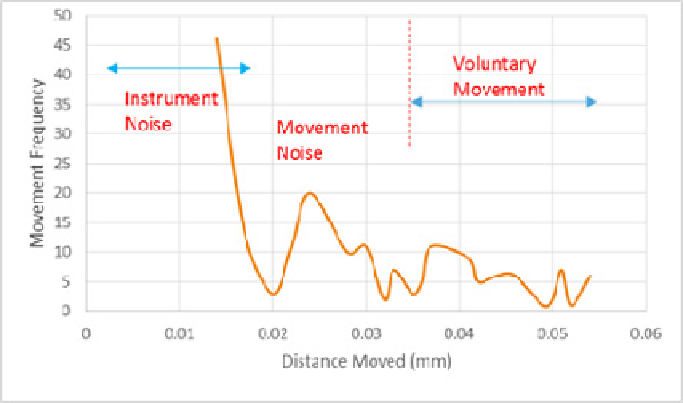Information Technology Reference
In-Depth Information
and can represent the physical processes. The small sized movements may be produced
by the tremor or movement segmentation noise. The instrument and other types of noses
may produce the smallest movement (less than 0.02mm) and the tremor may produce
movement of 0.02mm - 0.03 mm. Voluntary movements will be coarser than this. How-
ever, surgeons make very fine movements while doing suturing. For example, a surgeon
may tie 8 surgical knots while suturing a 1 mm diameter vessel which is approximately
0.5 mm apart. Hence it could be possible to make movements of fineness of 0.05mm by
the surgeon.
Fig. 5.
Multimodal histogram of hand motion
A third way to characterize the signals is by decomposing the hand motion using
EMD. The first two IMFs isolated represents the noise, the 3rd, fourth and fifth IMFs
represents physiological tremor and the rest the remaining signal represents the volun-
tary motion.
3.3
Dexterity as Quality Measures
Dexterity as a measure of motion quality may be defined by using the signal characte-
ristics in the frequency, spatial, and temporal domains.
If we count the oscillations that can account for the degree of control, we can
determine the hand stability which is an indication of dexterity. The absolute magni-
tude of the oscillations are divided into oscillations of scale h units (of example,
h = 0.01 mm). Oscillations are counted against the scale as follows.
Let N be the total number of peaks or troughs (oscillations) in the signal and n
i
be
the number of peaks or troughs having magnitude greater than (i * h) but less than or

Search WWH ::

Custom Search